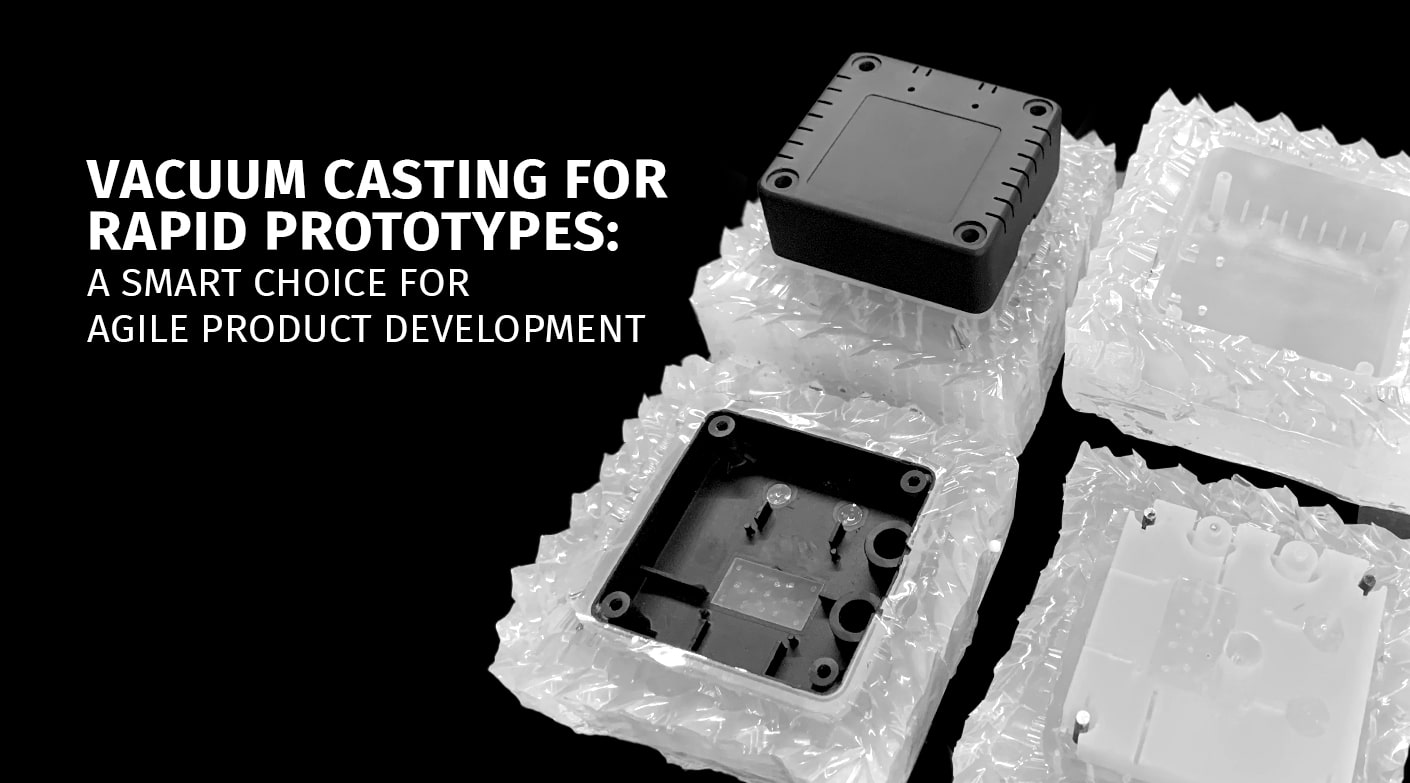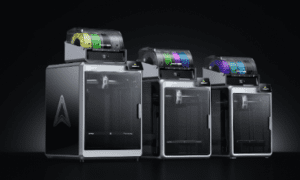Want to accelerate the development of your products without sacrificing quality? Most companies in the modern, ultra-competitive marketplace have managed to succeed because they are able to make ideas turn into reality as rapidly and efficiently as possible.
Speed, precision, and flexibility are not options anymore; they are the key to remaining on top. This is where vacuum casting for rapid prototypes comes in as an intelligent, scalable remedy. Vacuum casting of rapid prototypes speeds up innovation by transforming your 3D designs into real and functional parts, fast, economically, and with stunning detail.
Let’s dive deep into the world of vacuum casting and understand why it is a smart choice for agile product development.
Vacuum Casting: The Prototype Game-Changer Explained
Vacuum casting is a rapid and accurate way to make prototypes (high-quality replicas) of an original model. This is initiated by a master pattern, usually a 3D-printed or CNC-machined object, in which a malleable silicone mold is made. The casting resins of polyurethane or other materials are poured into the mold under vacuum pressure, which develops a specimen of an impressively smooth surface with exquisite fine detail.
This method is ideal for producing short-run prototypes, and being so, it is apt for performing functional testing or user trials, or even bridging production before investing in thorough injection molding. Vacuum casting is fast, versatile, and cost-friendly with the materials, and it is the first option for any designer and engineer who requires a correctly prepared, real-world model in a very short interval.
Why Vacuum Casting is a Smart Move for Agile Product Teams
In times where agility and responsiveness are necessary, vacuum casting for rapid prototypes extends beyond the design phase to the point when the product reaches the attention of the market. Also, the Vacuum Casting Market CAGR (rate of growth) will be approximately 5.3% during the forecast period (2025-2034). The success of this method depends on its capability to produce small quantities of design-type products quickly and efficiently, which is very much suitable for the process of modern manufacturing, which is very fast and very demanding.
These are the reasons why more agile teams decide to adopt vacuum casting for rapid prototypes:
#1 Faster Time-to-Market
Vacuum casting significantly reduces the costs and time of development, as it takes only a few days to get high-quality prototype parts. This is what makes it a perfect selection for agile teams, who want to iterate fast, process feedback, and turn the idea into validation at record speed.
A more expedient prototyping translates into faster testing and refinements. As the single silicon mold can produce around 15-25 parts, the production obtained using a single mold and a 2-cavity mold can be fabricated using the master mold. It provides a crucial benefit in competitive industries such as consumer electronics, automotive, and medtech industries since a lapse can translate into lost opportunities and elevated development expenditures.
#2 Lower Cost of Production
In contrast to injection molding, where the use of steel tooling is costly and time-consuming, vacuum casting just requires inexpensive silicone molds. This greatly decreases the upfront investment costs and would be very well suited to small-batch manufacture or low-volume prototypes.
Vacuum casting gives high-end parts at a low cost; thus, a high number of iterations can be done, and more freedom in product design decisions can be carried out without busting the budget. Thus, it is used by firms or R&D departments dealing with limited money, especially startups.
#3 Extensive Choice of Materials
Vacuum casting is able to support a wide range of polyurethane resins that have a similar appearance, texture, and performance to production plastics such as ABS, PP, PC, and even rubber-like plastics. This gives a designer and an engineer the opportunity to experiment with different mechanical qualities such as rigidity, flexibility, transparency, or impact resistance by testing those with seemingly realistic imitations.
#4 Functional Testing Readiness
Vacuum-cast parts are not only pretty to look at, but they also work well. These materials have sufficient mechanical properties to enable them to be used in the real world, like in drop tests, trials of fit and assembly, or ergonomic assessments.
Vacuum casting is therefore a great way to create a testable and working prototype that can allow the designer early feedback as to how well the product will work, how well the product can be used, and how well the product can be relied upon before going through the expensive process.
#5 Low-Risk Design Flexibility
Testing numerous design variations quickly and cost-effectively is one of the best attributes of vacuum casting. Teams can also now more easily test various geometries, wall thicknesses, finishes, and the properties of materials without facing cost constraints.
This promotes innovation, accelerates the R&D cycle, and minimizes the chances of design faults getting to mass production. It is a strong method to be followed with ease and with more innovation.
Thus, with vacuum casting, you can expect:
| Designer-Friendly Iteration | It is easy to alter, test, and refine prototypes without incurring the cost of conventional manufacturing. |
| Rapid Turnaround | Get 20-30 parts in a few days, a great case scenario when it comes to rapid iteration and testing with users at an early stage. |
| Economical | Get rid of expensive steel tooling, as silicone molds are cheap and are perfect to use for low-volume maintenance. |
| High Precision | Achieve close tolerance (less than 0.2 mm) and fine geometries with a high level of similarity with the master model. |
| Material Flexibility | Simulate a diverse variety of production materials, such as stiff ABS-type to flexible rubber-type resins. |
| Smooth Surface Finish | Silicone preserves surface texture and eliminates the need for additional handling after the mold. |
Final Thoughts: Why Vacuum Casting Is the Ultimate Secret Weapon
In a high-speed product development era, vacuum casting for rapid prototypes is no less than a remedy, as it is a strategic solution to innovation. Vacuum casting benefits designers and engineers by getting even more of their ideas into production quicker and more intelligently in high-quality products, with short turnaround times and the potential to simulate real-life functionality.
At Cubein, it is our specialty to convert your CAD designs into high-fidelity, powerful prototyping parts that will be delivered promptly and inexpensively, and with an impressive level of detail that will suit your needs for prototyping purposes. We offer high-end vacuum casting services with a view to assisting start-ups, SMEs, and research and development departments in sectors such as consumer electronics, automotive, medtech, and industrial design.
| Whether you need visual prototypes to demonstrate to investors or parts you can test in the field.
Cubein will bring it to you with accuracy and speed.
|
FAQs
- Which kinds of products are suitable to be vacuum cast?
Vacuum casting is best suited for housings, enclosures, ergonomic designing, and wearable equipment, as well as parts of the automotive interior and any prototype that demands fine details and material reality.
- How many pieces can the silicone mold produce?
A silicone mold normally has the capacity to make 15-30 parts depending on geometry, material, and casting parameters. In Cubein, mold design is optimized, thus making it more lasting and yet not at the expense of quality.
- What is the lead time of Cubein to deliver the parts made by vacuum cast?
We provide an excellent turnaround of 5-7 working days on standard vacuum casting jobs. In case of urgent orders, they can be supplied even earlier on request.
- Is it possible to simulate over-molding or multi-material parts with vacuum casting?
Vacuum casting can be employed creatively—yes, to simulate multi-material lines through sequential casting, or soft and hard resin mixtures. There are design changes that our team can recommend to support this functionality.





























